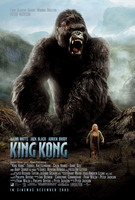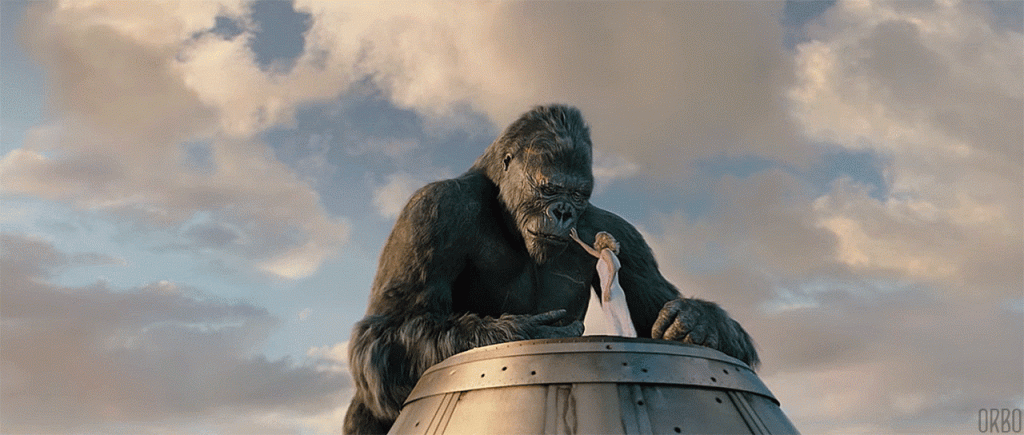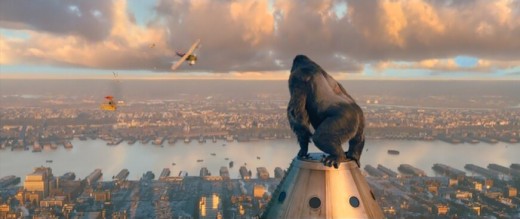
King Kong (2003) is a remake of a 1933 film of the same name where a giant prehistoric gorilla is taken from its native island in captivity to New York where it consequently escapes. The climactic scene where Kong is protecting Anne on top of the Empire State Building is a crucial moment as it highlights the destructive nature of humans against other animal species.

Peter Jackson uses this scene to create empathy for Kong, setting him up as the victim of the humans that are trying to kill him. A major part of how this is achieved is through the sound that is played whilst he lives his final moments. The film utilises oppositions throughout to highlight the separation from wild and tame, and humans and animals; this is no different with the sound employed within the scene. The diegetic sound on screen of Kong’s roars contrasts significantly with the non-diegetic music that is being played. Jackson uses the score to create an empathetic relationship with the viewer to Kong, the slow almost funeral style music emphasises the injustice and cruelty of this death. Kong’s roars are a stark contrast to this slow non-diegetic sound and this acts to intensify the majesty and strength of the beast that is being killed on screen. By conflicting the aggressive sounds of Kong with the soft human score Jackson creates this sense of opposition between the two. Through this intense opposition, Jackson develops the theme that humans are encroaching on nature; the opposing sounds symbolise the conflict that nature has with civilisation. As a result, the human-animal relationship is shown as being incompatible which ultimately causes the death of Kong.
Jackson’s use of Kong’s roar is crucial in creating this sense of nature being attacked, as it is symbolic of the beauty and power of nature within the animal kingdom. Kong’s positioning as an isolated figure atop the tower acts to nullify the aggressive and violent nature of the roar and instead make it seem as an act of desperation. Instead of being the aggressor in the situation Kong is shown to be desperate to be left alone, climbing away from the people on the streets to be alone on the pinnacle of the Empire State Building. Consequently, Kong as the representation of nature cannot escape humans’ destructive influence. The diegetic sound of the plane’s engines seems unnaturally loud and jarring to the audience, this further emphasises their role as the antagonist within this scene as they attack Kong.
Ultimately, the use of a wide shot perfectly encapsulates this theme that nature and civilisation cannot live in harmony. The wide shot features Kong on the pinnacle of the Empire State Building and in the background is the sprawling city of New York and Manhattan, Kong seems completely alienated in his surroundings of concrete buildings. Jackson perhaps purposefully leaves out any view of greenery to emphasise more dramatically this change from Kong’s natural habitat to this city.

The use of oppositions here, both auditory and visual, creates this intense dynamic that the two entities of nature and human civilisation create conflict whenever they are together. Through the non-diegetic music creating empathy for the animal however, it is clear to the audience that it is man’s fault not the animals for this conflict. The sympathy in the climactic scene is thus fixed firmly on Kong and not his human victims emphasising how destructive humans have been on the animal kingdom, as the sympathy of the viewer is not on their own kind but the beast itself.